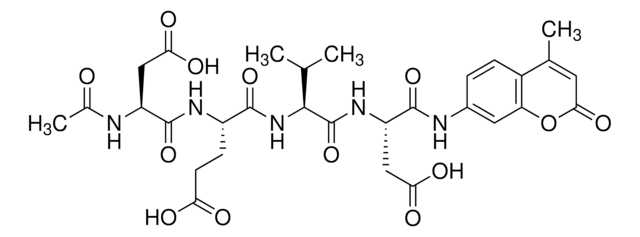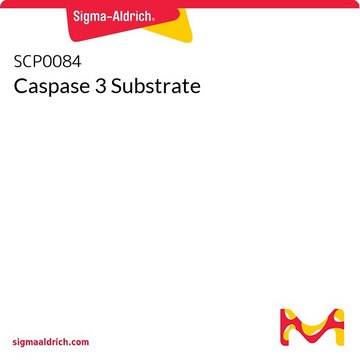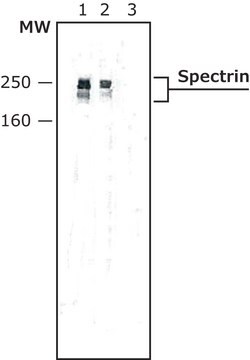C8726
Caspase 9 human
≥90% (SDS-PAGE), recombinant, expressed in E. coli (C-terminal histidine-tagged), buffered aqueous solution, >2,000 units/mg protein
Sinônimo(s):
ICE-Lap6, Mch6
About This Item
Produtos recomendados
recombinante
expressed in E. coli (C-terminal histidine-tagged)
Nível de qualidade
Ensaio
≥90% (SDS-PAGE)
forma
buffered aqueous solution
atividade específica
>2,000 units/mg protein
peso molecular
N-terminal prodomain plus the large subunit. 36 kDa (caspase 9 expressed as a C-terminal histidine-tagged protein appears as a two-subunit protein)
small subunit 13 kDa (subunit containing the histidine tag)
nº de adesão UniProt
Condições de expedição
dry ice
temperatura de armazenamento
−70°C
Informações sobre genes
human ... CASP9(842)
Procurando produtos similares? Visita Guia de comparação de produtos
Ações bioquímicas/fisiológicas
Definição da unidade
forma física
Código de classe de armazenamento
12 - Non Combustible Liquids
Classe de risco de água (WGK)
WGK 1
Ponto de fulgor (°F)
Not applicable
Ponto de fulgor (°C)
Not applicable
Equipamento de proteção individual
Eyeshields, Gloves, multi-purpose combination respirator cartridge (US)
Certificados de análise (COA)
Busque Certificados de análise (COA) digitando o Número do Lote do produto. Os números de lote e remessa podem ser encontrados no rótulo de um produto após a palavra “Lot” ou “Batch”.
Já possui este produto?
Encontre a documentação dos produtos que você adquiriu recentemente na biblioteca de documentos.
Nossa equipe de cientistas tem experiência em todas as áreas de pesquisa, incluindo Life Sciences, ciência de materiais, síntese química, cromatografia, química analítica e muitas outras.
Entre em contato com a assistência técnica








